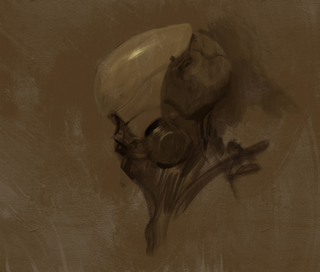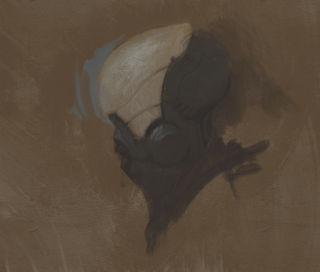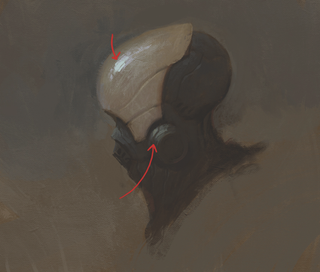4 pro tips for achieving a trad painted look with digital software
Concept artist Sang Han Sang on how to give your digital art a traditional look and feel.
The best thing to do is to try to think (and work) like a traditional painter. Do some research into some of the master artists who inspire you. Try to understand the reasons why they painted the way they did. Learn some of the processes and techniques traditional painters use and try to translate that into digital medium.
For instance, when I start a painting, I'll do a rough sketch and put a neutral brown colour on top using a Multiply layer. This to me simulates an under-painting of yellow ochre or burnt sienna, which is one of the techniques used by oil painters.
Before you begin
Many people have tried using brushes that simulate analogue bristles, but they may not have thought about how the paint is applied. Traditional painters take great care in applying each stroke of paint, which has been thoughtfully blended to the right colour and value on a palette.
Since the digital medium is so fast and forgiving, we tend to dive right in without much thought and noodle around until something happens. I think this leads to muddy colours, and the energy of the initial gesture gets lost.
01. Sketch it out

I begin with a rough sketch, trying to keep it loose and gestural. It's difficult to think about design, colour, lighting and composition all in one pass so I break it down into steps and keep it simple at the beginning. These early steps are important because not only are they the foundation for an entire painting, but some of these strokes may show through in the finished work.
02. Layer it up

Here I create a new layer and change the mode to Multiply. I then paint on this layer with a colour that resembles yellow ochre or burnt sienna. This will help to gauge value and colour more easily than if it was a white canvas. I could have simply filled the layer with a flat colour, but again, the painted strokes may show through and add to the final painting.
03. Rendering

In this step, I block in the local colours and start rendering. As I do this, I try to remember not to overly blend or noodle around too much, as mentioned above. One of my goals is to retain the energy of each brush-stroke and put paint down with a sense of conviction. Sometimes I put a single stroke down, undo it and repeat this process many times until I'm satisfied.
04. Leave marks

Keep in mind that you don't have to render everything. You'll notice in traditional paintings, certain details are kept as abstract marks. This adds another level of interest to the viewer. As you get closer to the end of the painting, lay the strokes down with lower opacity to give the effect of thicker paint. I like to do this when rendering certain accents, such as highlights.
Words: Sang Han Sang
Sang is a concept artist working at Firaxis Games. He likes to take on freelance projects to keep his skills sharp and broaden his horizons.

Thank you for reading 5 articles this month* Join now for unlimited access
Enjoy your first month for just £1 / $1 / €1
*Read 5 free articles per month without a subscription

Join now for unlimited access
Try first month for just £1 / $1 / €1
Get the Creative Bloq Newsletter
Daily design news, reviews, how-tos and more, as picked by the editors.
The Creative Bloq team is made up of a group of design fans, and has changed and evolved since Creative Bloq began back in 2012. The current website team consists of eight full-time members of staff: Editor Georgia Coggan, Deputy Editor Rosie Hilder, Ecommerce Editor Beren Neale, Senior News Editor Daniel Piper, Editor, Digital Art and 3D Ian Dean, Tech Reviews Editor Erlingur Einarsson and Ecommerce Writer Beth Nicholls and Staff Writer Natalie Fear, as well as a roster of freelancers from around the world. The 3D World and ImagineFX magazine teams also pitch in, ensuring that content from 3D World and ImagineFX is represented on Creative Bloq.
